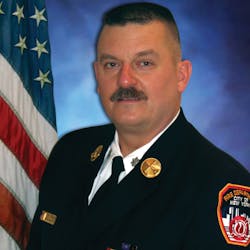The Fire Scene: Hoselines & Search Teams
Discussions about stretching hoselines and deploying search teams at structural fires have occurred many times in many places between many people. The fact is, there is no one answer for every situation. However, there are some good, solid reasons for the tactics that are described below.
Hoseline
It’s safe to say that when an engine arrives at a fire in a house or apartment building, getting the first line into operation first is rarely, if ever, wrong: The place is on fire; they called the fire department; and you arrived with your fire engine. Regardless of any other possible situation that’s on scene, the first engine must get that first attack line into operation. Is that the case even when it looks as though people might be inside? Yes! Even with reports of people inside? Yes! Even with a visible person at a window on the third-floor front? Yes!
I suspect that some of you will disagree as you read this, but that’s OK.
If you do anything else other than deploy the first attack hoseline, you allow the fire to extend, spread and grow. I know that back in basic training they told you that life is the priority, and I agree—and I will outline that below—but stretching that first hoseline addresses life by simply extinguishing the fire, so it must be done first.
There can be other details that can modify this tactic.
If your engine rolls in with five or six people—or, maybe, even four—that first line can be started and a single firefighter at the same time might be able to quickly throw a portable ladder to a visible occupant at a window and complete the rescue. However, if you’re riding with two or three people on your engine, your tactical choices are quite limited. Stretch the line.
Some departments assign a ladder company (or two) along with the first-alarm engine companies. If a truck arrives right behind the engine, the members on the truck can and should jump right into a search operation. Again, staffing might be an issue, but even with as few as two firefighters on a truck, a search team is available.
What about forcible entry, some of you might be thinking? Doesn’t that first truck need to do that first, before running in and starting a search? Yes. So, do it, and do it fast, so you can transition quickly into your search assignment.
This is why we train, and this is why it’s so important to be able to perform fire scene duties and assignments quickly.
Other situations
What if your department only has a couple of trucks, and they arrive several minutes after the first engine? What if your department has no trucks, just engines?
You must make some tactical adjustments. Your engines must carry, use and be proficient with forcible entry tools. Yes, the axe and the Halligan.
The nozzle team must carry the irons with it to the entrance door, force entry, drop the irons there and get that hoseline into operation.
What about search?
If an engine company arrives next (remember, you have no trucks), it must be ready to get into the building and to conduct a primary search of the fire area. Other tactics must be completed as well, depending on how many more units will arrive in the ensuing few minutes.
Could conditions require the second engine to immediately stretch a second hoseline into the building? Yes. So, the incident commander or the second engine officer can order that assignment, and as noted above, if there are enough firefighters, a team of two might be available for a search assignment.
First line, search ASAP
We must put the fire out. Even your grandchildren know that. However, a search must be initiated, too. Not at just some fires. Not at just where people are reported or visibly trapped. At every residential fire.
Get in there!
About the Author
John J. Salka Jr.
Battalion Chief
JOHN J. SALKA JR., who is a Firehouse contributing editor, retired as a battalion chief with FDNY, serving as commander of the 18th battalion in the Bronx. Salka has instructed at several FDNY training programs, including the department’s Probationary Firefighters School, Captains Management Program and Battalion Chiefs Command Course. He conducts training programs at national and local conferences and has been recognized for his firefighter survival course, “Get Out Alive.” Salka co-authored the FDNY Engine Company Operations manual and wrote the book "First In, Last Out–Leadership Lessons From the New York Fire Department." He also operates Fire Command Training, which is a New York-based fire service training and consulting firm.

